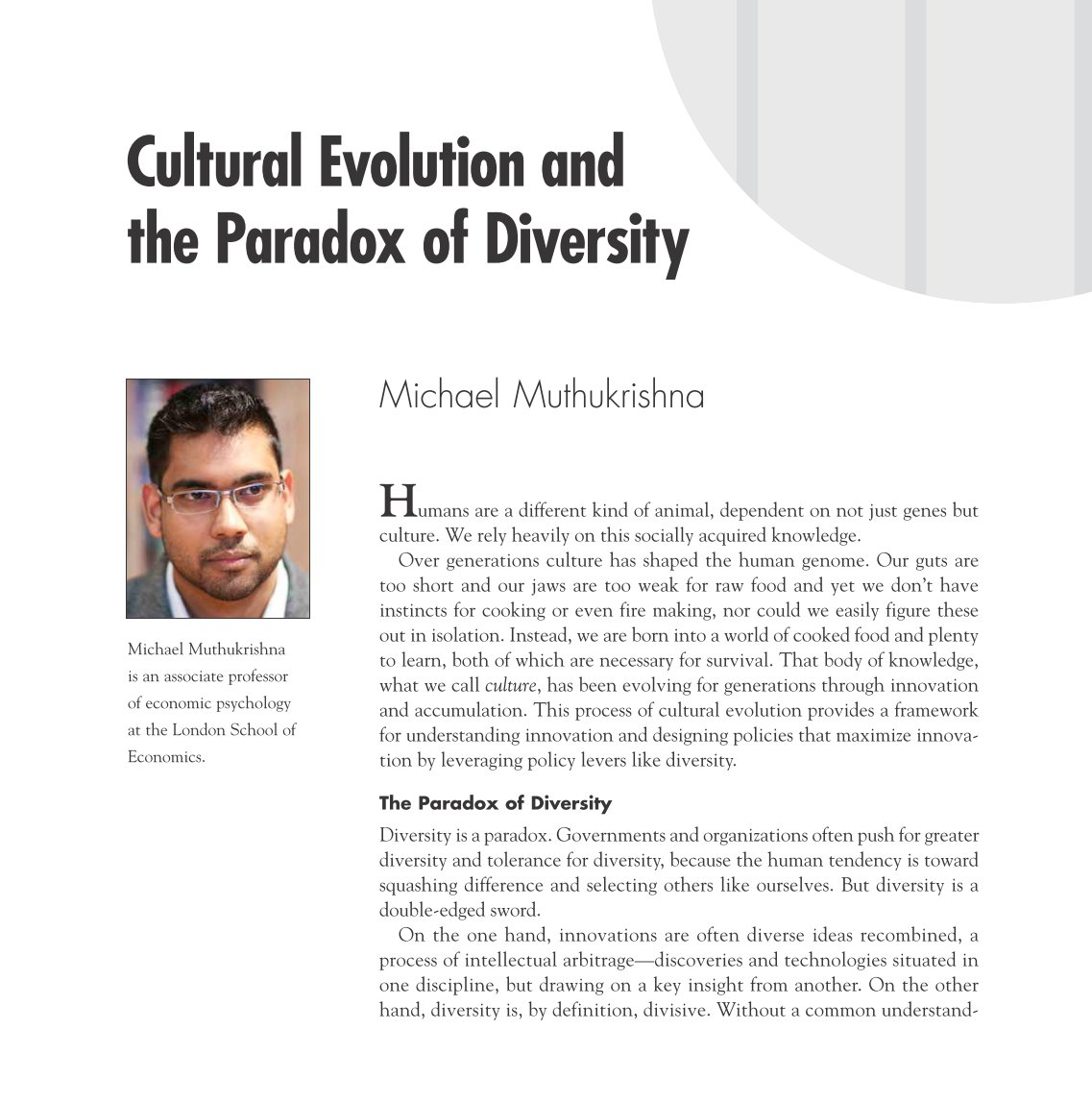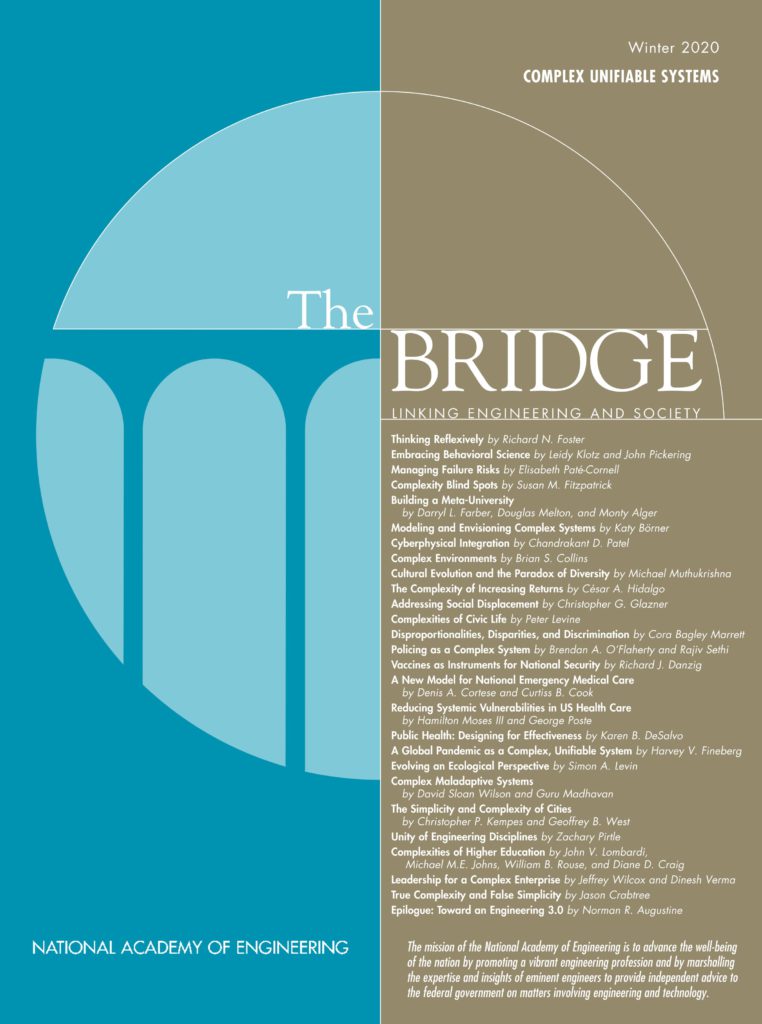Summary from Twitter thread:
As an engineering grad, I’m delighted to contribute to the latest National Academy of Engineering Bridge issue on “The Paradox of Diversity” https://nae.edu/244742/Cultural-Evolution-and-the-Paradox-of-Diversity
It’s short, but here’s a quick trailer.

Diversity is a double edged sword. Governments and organizations often push for greater diversity and tolerance for diversity, because the human tendency is toward squashing difference and selecting others like ourselves. But diversity can both help and harm innovation.
On the one hand, there’s intellectual arbitrage: discoveries and technologies situated in one discipline that draw on a key insight from another. Here diversity is a fuel for the engine of innovation.
On the other hand, diversity is, by definition, divisive. Without a common understanding, common goals, and common language, the flow of ideas in social networks is stymied, preventing recombination and reducing innovation. How do we reap the benefits without paying the costs?
Consider the challenge of collaborations between scientists and humanities scholars (or even between scientists in different disciplines). The key is to find common ground through strategies such as optimal assimilation, translators and bridges, or division into subgroups.
Resolving the tension between diversity and selection is at the core of a successful innovation strategy. And there are many possible solutions.
Some dimensions of diversity matter more than others—without a common language, communication is difficult. On the other hand, food preferences create little more than an easily solved coordination challenge for lunch.
But between these are many dimensions where optimal assimilation may be desirable and traits can be optimized, such as psychological safety so people feel free to share unorthodox ideas.
Other strategies include interdisciplinary translators. In my role at the Database of Religious History (DRH)—a large science and humanities collaboration—we have benefited from a few scholars trained in both to bridge the gap.
Innovation can also be divided into independent groups, coordinating within the group but competing against others trying different strategies (e.g. competition between firms).
Check out the full issue here: https://www.nae.edu/244665/Winter-Issue-of-The-Bridge-on-Complex-Unifiable-Systems









